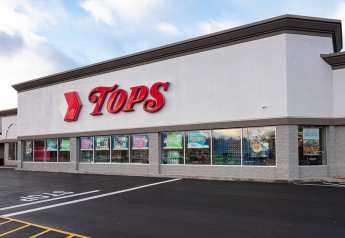Why a New App Designed by Iowa State Could Be a Game Changer to Identify and Diagnose Unwanted Pests
U.S. Farm Report 09/24/22 - Pest App
In fields across Iowa, unwanted pests are on the prowl year after year, but a new app could help farmers not only detect which pests are in their field, but also give insights on how to treat the field if it's a yield-robbing pest.
“It is the first of its kind in the sense we are trying to cater the needs of farmer by putting these management practices or strategies linked with insect detection,” says Arti Singh, assistant professor in Department of Agronomy at Iowa State University.
The main goal is to make pest management simpler, which is why the app is a one-stop shop that first identifies the pest, but also gives management advice by recommending on next steps.
“They go into a field, they take a picture, and in real time, it tells them which insect it is, whether it's a beneficial insect or if it’s a harmful insect,” she adds. “It also gives them the scientific name and common name of the insect.”
The app is already able to identify 2,000 different insects today, but by early next year, it will have the capability detecting and diagnosing more than 4,000 pests. The growth of the app’s capability is being driven by the power of artificial intelligence.
“We use a concept called deep learning, which is the subset of artificial intelligence, where we collect these images, and we pass it through a network, if you will, and the network is essentially extracting all different kinds of features of this of the images and then making a decision on which insect class it belongs to,” says Baskar Ganapathysubramanian, professor associate chair for Research Mechanical Engineering, Iowa State University.
In order to double the amount of insects it can detect by early next year, millions of images will need to be collected, a process that’s already underway.
“I think the large amount of data that we have been collecting, both from sensors, from images, from drones and from citizen scientists, has provided a wonderful opportunity for us to train new kinds of artificial intelligence models on this data so that we can facilitate decision support and enable farmers to do what they do better, faster and easier way,” says Ganapathysubramanian.
While creating a pest identification has a goal of simplicity for the end user, the data on the front end can be noisy.
“Different people use different kinds of cameras, different people use different kinds of phones, at different locations in different resolutions,” says Ganapathysubramanian. “So, how do you account for all those things while you design insect detection app is something that we have to deal with.”
Another challenge is the sheer amount of data that the app will need to process. Ganapathysubramanian says some pests will have more than 100,000 images, while other insects may only have 20 photos, and many of those pests have similar characteristics.
“There are also some beetles that looks very, very similar, but they actually belong to different class, so how do you distinguish between two similar looking images, but they actually belong to wildly different classes where one class could be a beneficial pest insect and the other class could be actually a pest, or perhaps an invasive species."
While artificial intelligence is key, the human element is still a vital piece of the puzzle. However, the sheer amount of data creates a challenge with sorting through all the data.
“You have lot of images, it takes an entomologist, actually to decide what it each individual image, which class it belongs to, but if we have 20 million images like these, it's difficult for an entomologist to go and look at and rank and read each individual image,” explains Ganapathysubramanian.
The app will help farmers solve pest problems not only today, but also tomorrow, as deep learning continues to evolve with the pests and diseases farmers face.
“We don't know about these new crops which insect pests or diseases can be a problem, says Singh. “If we have this library of insect pests, and we can use the smartphone app to identify in a timely way and mitigate, I think this will be a game changer for farmers.”
While the app is off to a strong start, the researchers say their work is far from over, as the technology could soon harvest solutions across the U.S. And the researchers say it's because artificial intelligence, data science and the large amount of data that they're collecting, are coming together to provide real-time insight and solutions for farmers.







